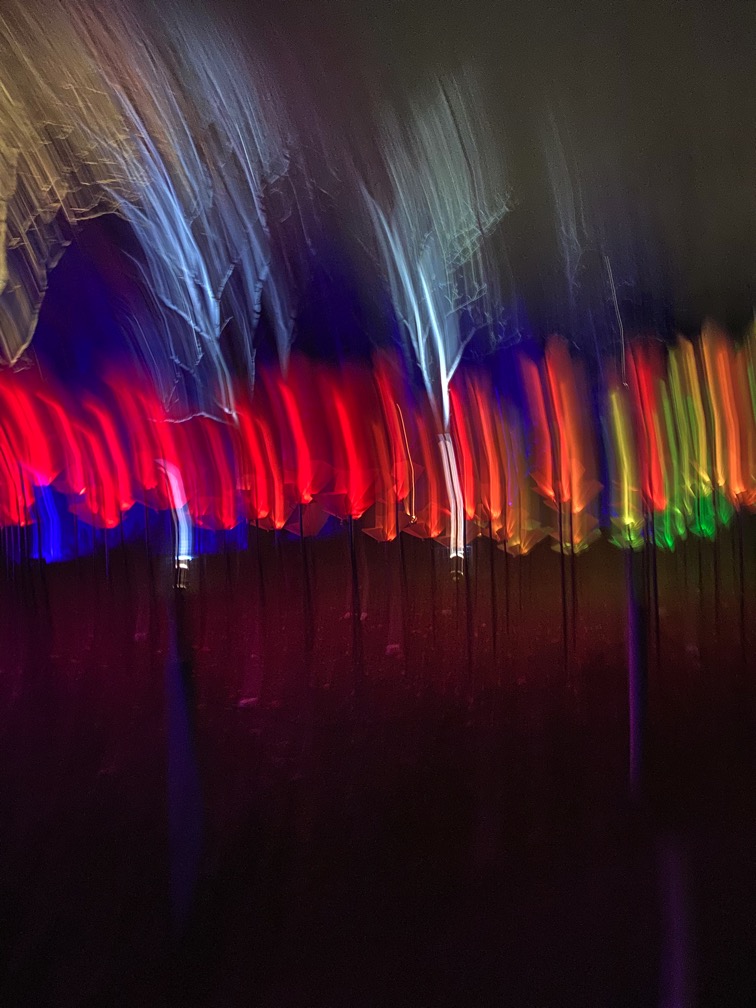Exuberant = ant no longer driving taxi
Personal Blogs
Why would you want to roll steam?
What do you call a woman that swears at tea? Kirsty.
Attested from the 1890s but the origin is unknown; it could be a made-up word. New to me, it was in a book I’m reading. Though I’d never seen it before, the context made it clear at once what it meant, and I’ve learned a new word. Language is so productive, it’s possible to invent words that speakers will instantly grasp and start using.
After seeing a YouTube video "hoes this app blow out candles" about an app called 'Blower' on The Action Lab I bought a copy to try it out.
The app is a simulation of a fan and the amazing thing is that it does actually blow things about. The Action Lab showed it really ould blow out a small candle but I just tried blowing some small scraps of paper and sure enough they move.
Having trouble with a noisy dog? Call our Yelpline 24/7
A popular question in Christmas quizzes asks how many gifts were sent, and received, altogether in the carol The Twelve Days of Christmas.
So on day 1 (sing the song) it was 1
On day 2 (sing the song) it was 2 plus 1 = 3
On day 3 plus 2 plus 1 = 6
….
What is the total after 12 days: 1 plus 3 plus 6 …?
Now, what if there were 365 days of Christmas? What would the grand total be then?
Who's there?
No it’s Fred.
Spreads across the courtyard.
Another day.
If you’ve seen one large shopping centre, you’ve seen a mall.

Yesterday we went to the Christmas Market at Stratford-on-Avon. A very interesting town, with many beautiful old houses, including one that belonged to Shakespeare's father John and is very likely to have been the playwright's birthplace. As we were leaving just at sunset the lights were coming on and the scene was almost magical.

My friend was rushed to hospital after being kicked by a horse. Luckily his condition is stable.
This is well-known but still surprising.

Accordion to research, 9 out of 10 people don't notice when you replace words with random musical instruments.
Every day a group of friends play a strange game. Everyone writes their name on a slip of paper, folds it, and drops it into a hat. The slips are thoroughly shaken up, and then each player pulls a slip out of the hat. Anyone who draws a slip with their own name on wins a prize.
My question is: over a long series of games, what is the average number of players per game who win a prize?
Today we went to see the Christmas Light Show at Kew Gardens. Here are three installations that I thought especially beautiful.



Inspired by Steve Mould's videos about the chanin fountain, I bought 5 m of 3.2 mm beaded roller pull chain and took it down the pub, where it was a big hit.
When my groceries came today the supermarket had replaced an item costing £12 with one costing £30. So a good deal! I messaged a friend and said “I lucked out”. But then I wondered if I meant “lucked in”.
Well lucked out is indeed what I meant. It’s an idiom for a fortunate event. But it is also an idiom for something happening that is unfortunate. So it can mean something and also the opposite, which is interesting.
There are words in English that behave the same way: for example “cleave” can mean cling to, but also separate from. And “clip” can mean attach, but also cut off.
There is an interesting discussion here
https://www.merriam-webster.com/words-at-play/words-own-opposites
PS Confusingly there is another idiom “lucked in”. And that is definitely good fortune.
How do you advertise ears? Ear plugs.


Today my friend will drop 10,000 biodegradable poppies from a classic aeroplane, a de Havilland Rapide. Here's a photo from a previous occasion.

going
going
gone
I’ve been working as a tailor, specialising in the top half of men’s suits. But I’ve decided to jack it in.
I took the same snow scene as in my blogpost of 20 October and put it through the Deep Dream generator, but this time the transfornation was not based on a style image but instead on patterms the AI software has been trained to recognise. Here's the result, bizarre and vaguely disturbing, but very interesting.

This blog might contain posts that are only visible to logged-in users, or where only logged-in users can comment. If you have an account on the system, please log in for full access.